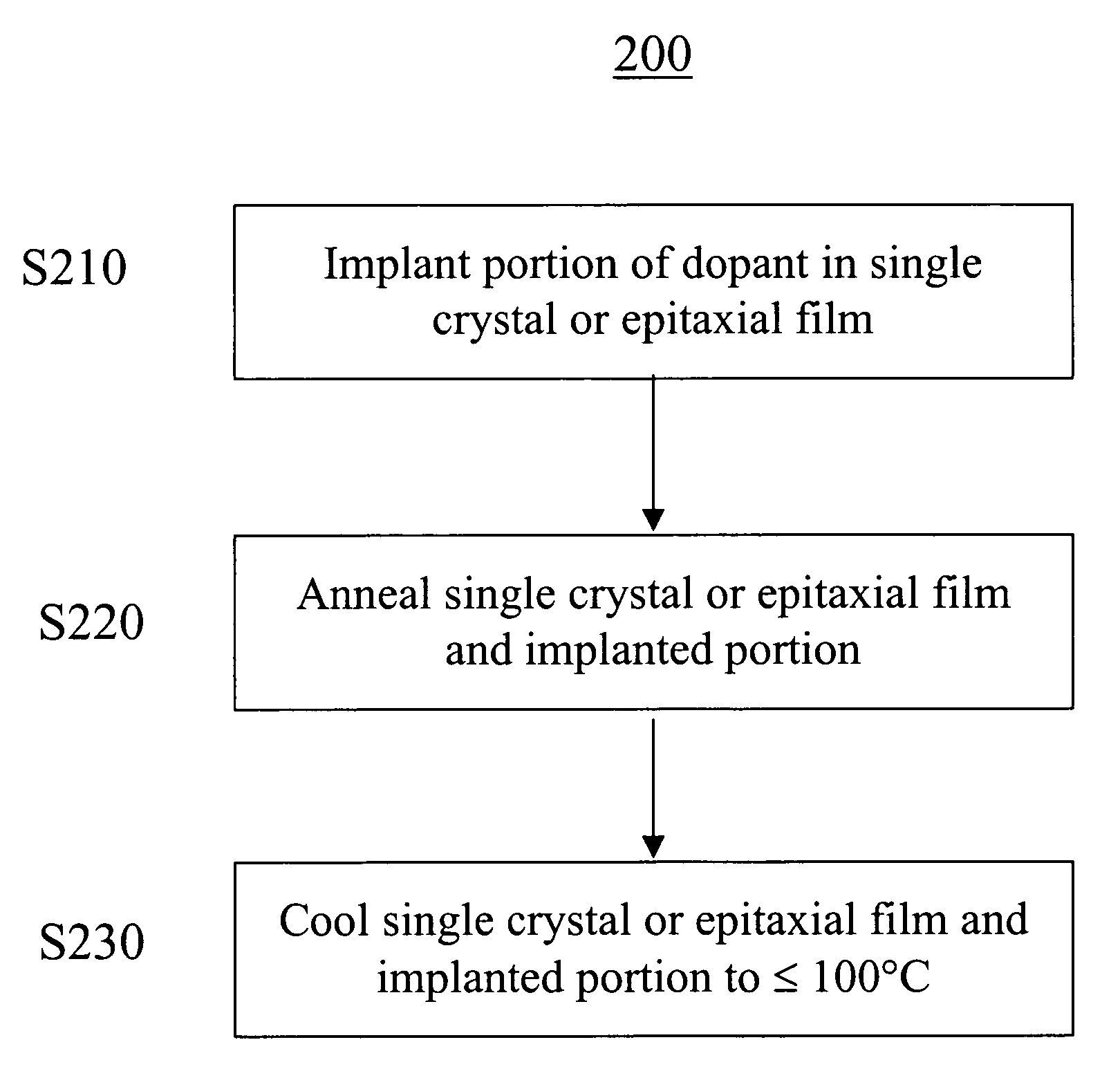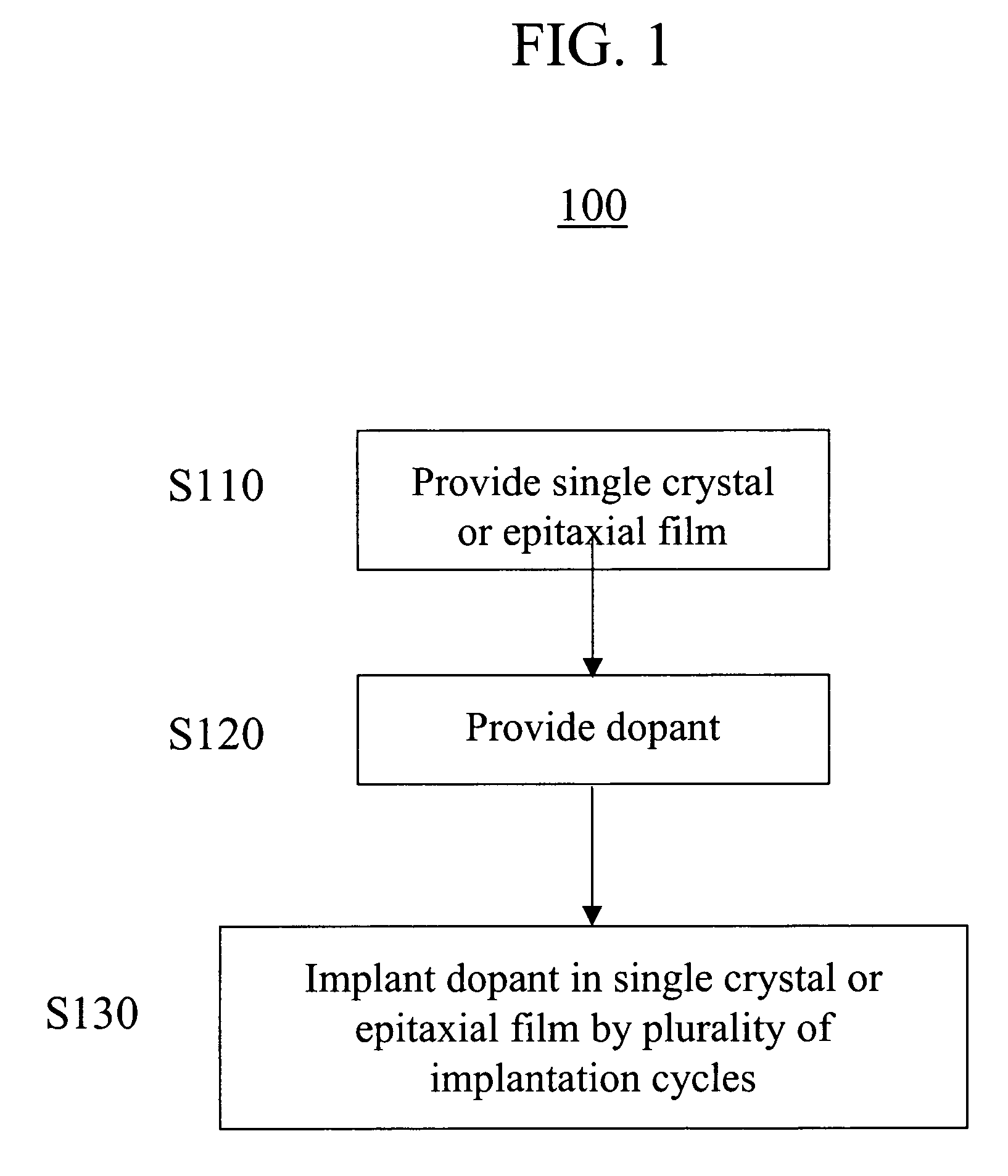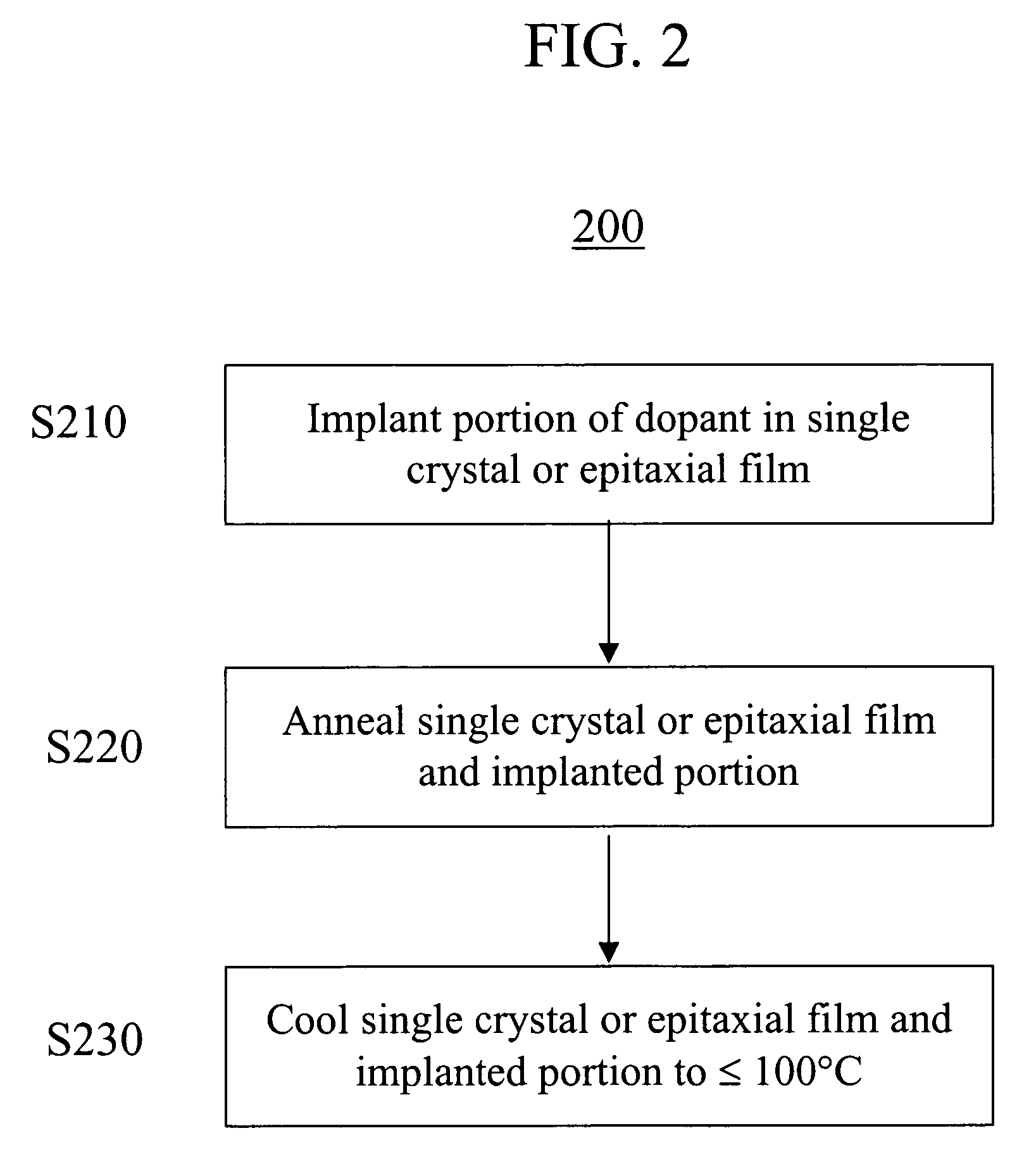Method for implantation of high dopant concentrations in wide band gap materials
a wide band gap material and high concentration technology, applied in the direction of basic electric elements, semiconductor/solid-state device manufacturing, electrical equipment, etc., can solve the problems of inability to lateral dopant film growth in microcircuits, difficult to incorporate dopants by diffusion into many of these materials, and high concentration of wide band gap materials, so as to minimize the defect concentration and reduce the concentration of defects , the effect of rapid thermal annealing
- Summary
- Abstract
- Description
- Claims
- Application Information
AI Technical Summary
Benefits of technology
Problems solved by technology
Method used
Image
Examples
example 1
[0035]The effectiveness of LMDI RTA technique described herein was investigated for lattice recovery of GaN implanted with Mg+ ions. Two 1 μm GaN single crystal films were implanted at room temperature with 50 keV Mg+ ions. Sample 1 was implanted in a single step to obtain a dose of 6×1015cm−2 of Mg+ ions and then annealed three times at 900° C. for 30 seconds. Sample 2 was implanted in three steps to obtain the same total ion dose (6×1015cm−2). The ion dose for each step was 2×1015cm−2. Each implantation step was followed by a single annealing step at 900° C. for 30 sec. Thus, both Sample 1 and Sample 2 were implanted to the same total Mg+ ion dose (6×1015cm−2) and annealed three times under the same conditions.
[0036]The amount of lattice damage to each sample was measured by Rutherford backscattering spectroscopy combined with channeling (RBS / C) and is shown in FIG. 5. In FIG. 5: (a) is a random unaligned RBS spectrum; (b) is a spectrum of a 1 μm GaN single crystal film implanted ...
PUM
 Login to View More
Login to View More Abstract
Description
Claims
Application Information
 Login to View More
Login to View More - R&D
- Intellectual Property
- Life Sciences
- Materials
- Tech Scout
- Unparalleled Data Quality
- Higher Quality Content
- 60% Fewer Hallucinations
Browse by: Latest US Patents, China's latest patents, Technical Efficacy Thesaurus, Application Domain, Technology Topic, Popular Technical Reports.
© 2025 PatSnap. All rights reserved.Legal|Privacy policy|Modern Slavery Act Transparency Statement|Sitemap|About US| Contact US: help@patsnap.com



